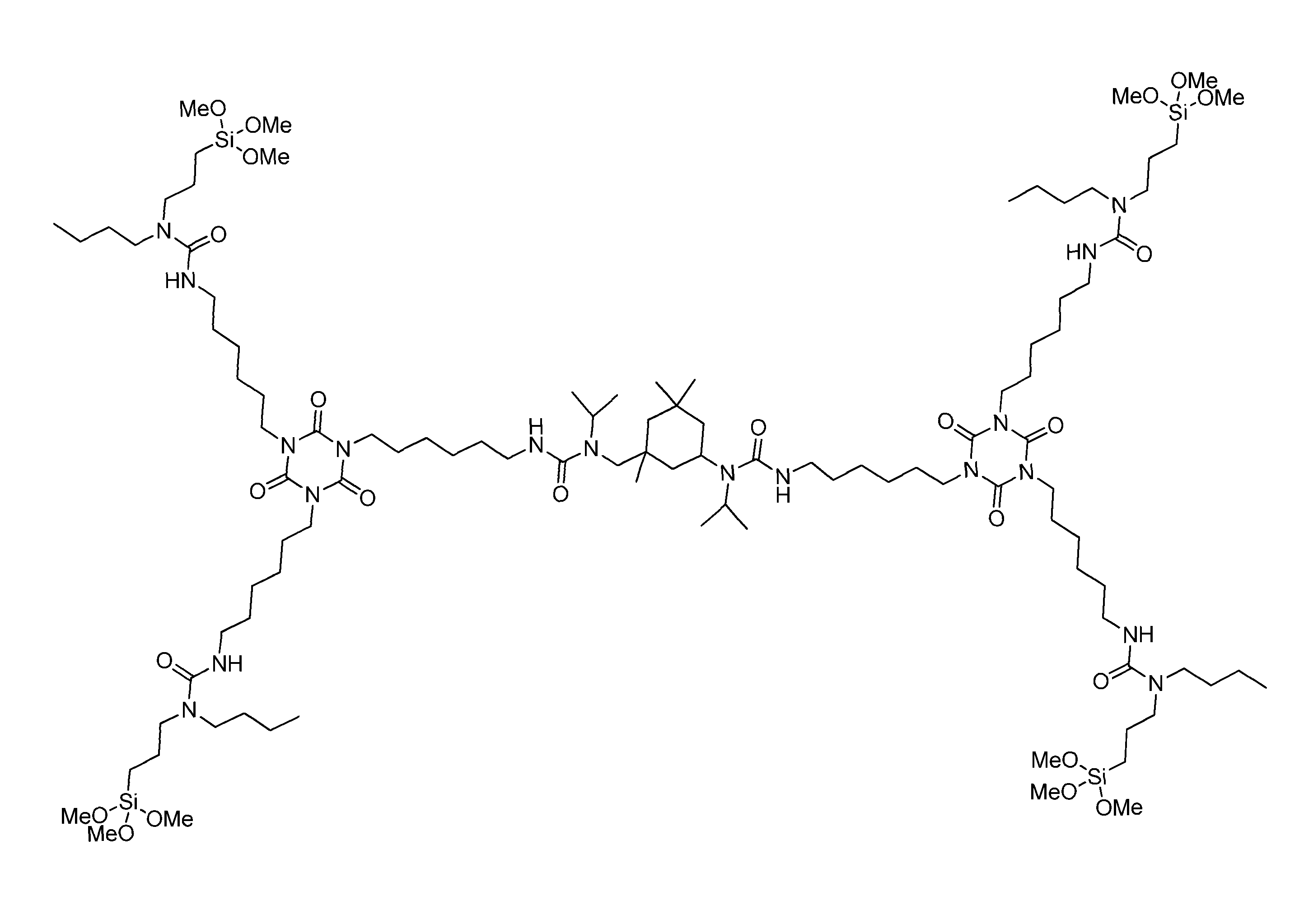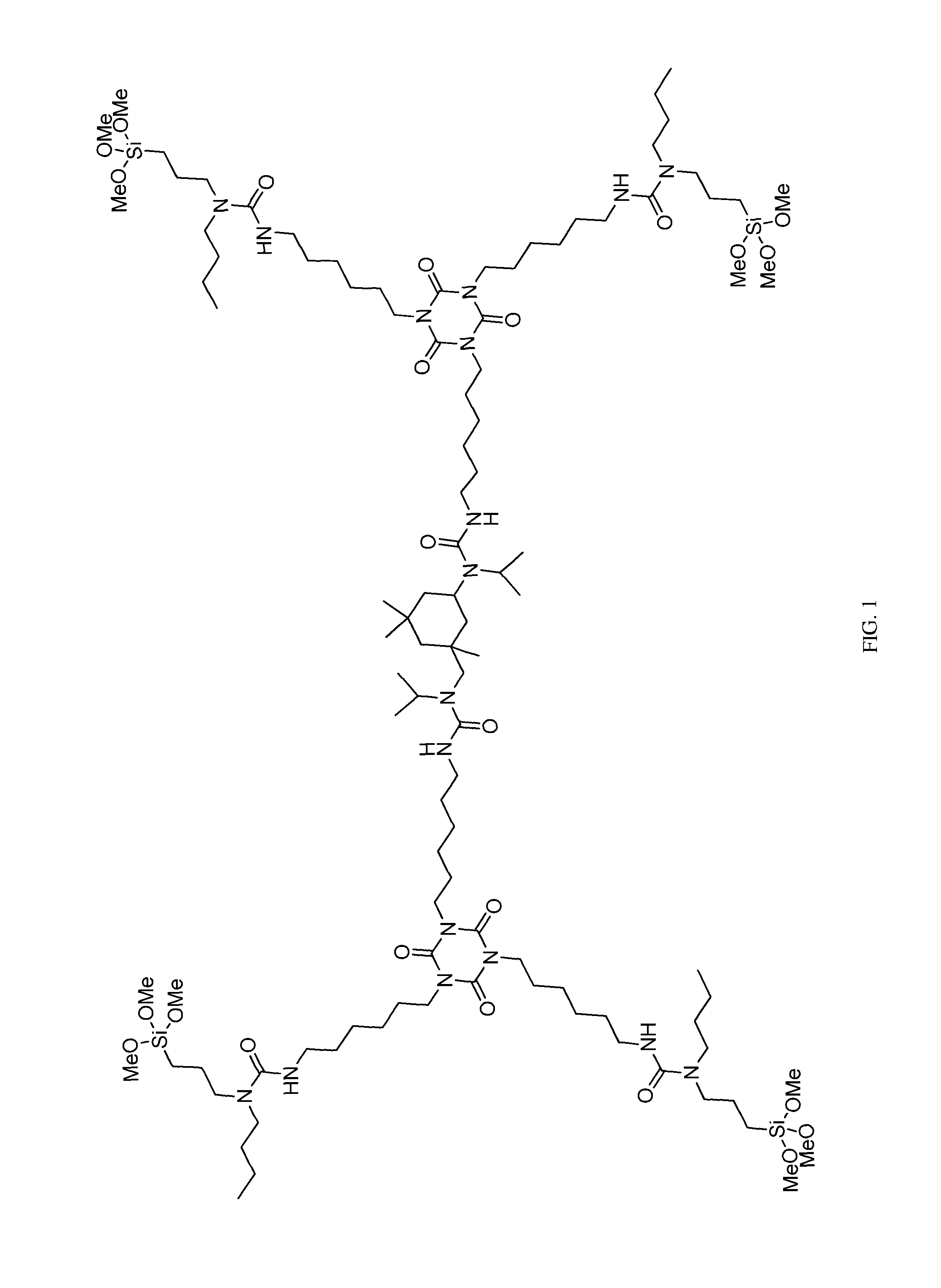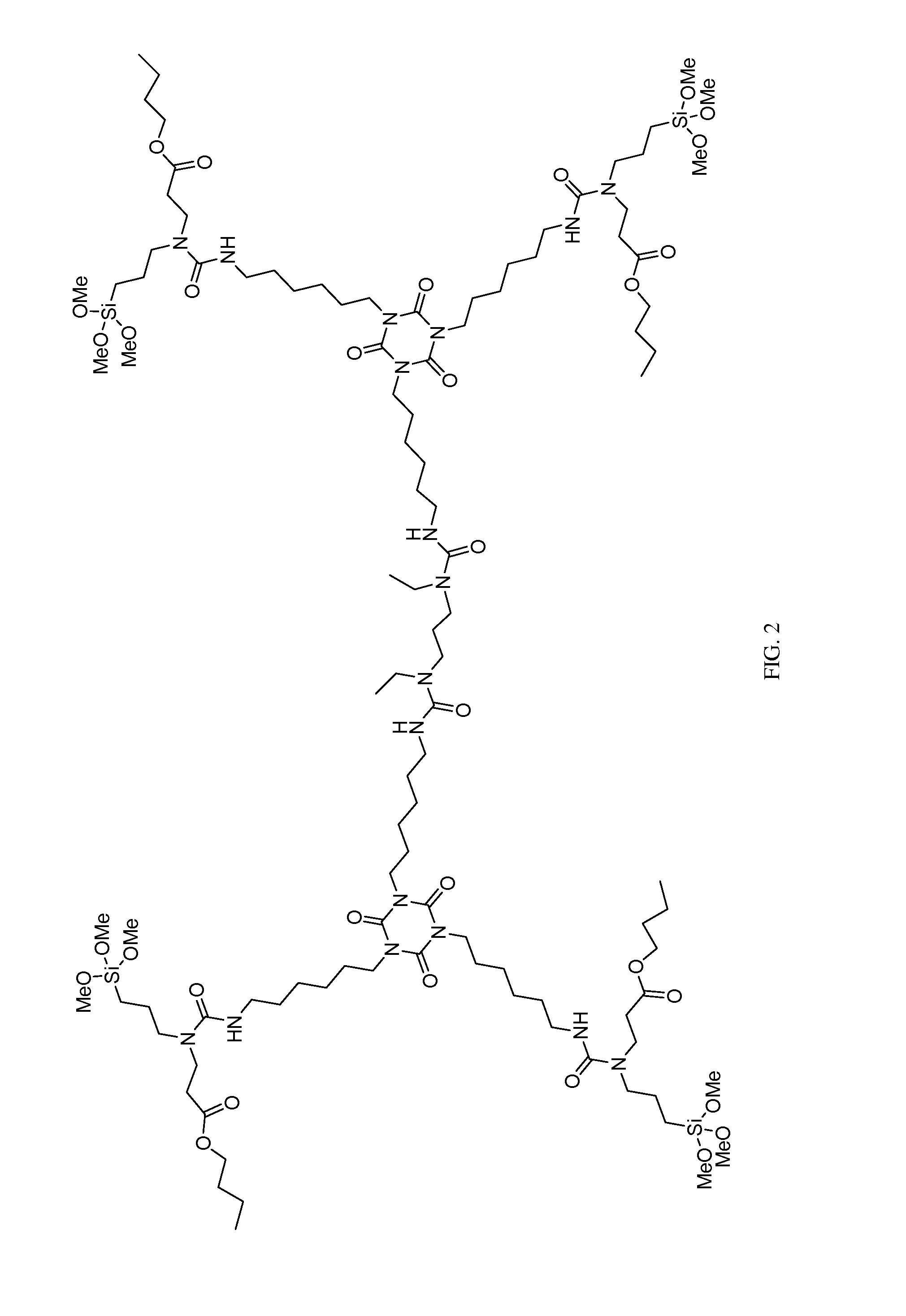Single-component moisture-curable coatings based on N-substituted urea polymers with extended chains and terminal alkoxysilanes
a technology of n-substituted urea and polymer, which is applied in the direction of coatings, polyurea/polyurethane coatings, etc., can solve the problems of increasing the overall molecular weight of the polymer, and achieve fast tack-free and dry-through times, high flexibility, and good adhesion
- Summary
- Abstract
- Description
- Claims
- Application Information
AI Technical Summary
Benefits of technology
Problems solved by technology
Method used
Image
Examples
example 1
[0070]This example describes the preparation of a polymer based on an aliphatic polyisocyanate, N-alkyl amino-functional alkoxysilanes, and a cycloaliphatic secondary diamine chain extender with N-alkyl groups. The structure is shown in FIG. 1.
[0071]81.6 g (0.446 equiv.) of an aliphatic polyisocyanate based on an HDI isocyanurate trimer (commercially available as Desmodur N-3600 from Bayer Material Science) was dissolved in 115 g of Aromatic 100 (commercially available from Exxon) in a 500 ml 3-neck round bottom flask equipped with an Argon inlet and thermometer. This was followed by the addition of 5 g of vinyltrimethoxysilane (commercially available from Aldrich) as a drying agent. Using an addition funnel, 71.38 g (0.303 equiv.) of N-butyl-3-aminopropyltrimethoxysilane (commercially available as SIB 1932.2 from Gelest) was added dropwise to the solution while keeping the temperature at 40-50° C. Next, 18.78 g (0.147 equiv.) of N-isopropyl-3-((isopropylamino)methyl)-3,5,5-trimethy...
example 2
[0072]A semi-gloss single-component coating composition was prepared by mixing 165.01 g of the polymer solution (100 g solid polymer by weight) in Example 1 with 11.65 g titanium dioxide, 2.9 g Shepherd Black 30C940, 1.95 g Shepherd Green 410, 1.0 g Shepherd Yellow 30C119, 20 g ceramic microspheres, 10 g Oxsol 100 and 0.5 g dibutyl tin dilaurate.
[0073]The coating was applied at 3 mils (76.2 microns) wet film thickness to tinplate panels and a laneta card, and was allowed to cure (crosslink) at ambient conditions (77° F. and 50% relative humidity). The coating demonstrated a tack-free time of 1 hour and a dry-hard time of 6 hours. After 14 days of curing at ambient conditions, the coating demonstrated a 60° gloss of 57 GU, a resistance of 100+ double rubs to methyl ethyl ketone (MEK) solvent, and a pendulum hardness of 84 oscillations. The coating also demonstrated high flexibility, and passed a 180 degree bend test and a ¼″ Mandrel Bend test without cracking.
example 3
[0074]A semi-gloss single-component coating composition was prepared by mixing 132.01 g of the polymer solution (80 g solid polymer by weight) in Example 1 with 11.65 g titanium dioxide, 2.9 g Shepherd Black 30C940, 1.95 g Shepherd Green 410, 1.0 g Shepherd Yellow 30C119, 30 g ceramic microspheres, 20 g of a methoxy-functional dimethylpolysiloxane (commercially available as Silres SY231 from Wacker Chemical), 15 g Oxsol 100 and 1.0 g dibutyl tin dilaurate.
[0075]The coating was applied at 3 mils (76.2 microns) wet film thickness to tinplate panels and a laneta card, and was allowed to cure (crosslink) at ambient conditions (77° F. and 50% relative humidity). The coating demonstrated a tack-free time of 1 hour and a dry-hard time of 3 hours. After 14 days of curing at ambient conditions, the coating demonstrated a 60° gloss of 48 GU, a resistance of 100+ double rubs to methyl ethyl ketone (MEK) solvent, and a pendulum hardness of 91 oscillations. The coating also demonstrated high fle...
PUM
| Property | Measurement | Unit |
|---|---|---|
| thickness | aaaaa | aaaaa |
| thickness | aaaaa | aaaaa |
| thickness | aaaaa | aaaaa |
Abstract
Description
Claims
Application Information
 Login to View More
Login to View More - R&D
- Intellectual Property
- Life Sciences
- Materials
- Tech Scout
- Unparalleled Data Quality
- Higher Quality Content
- 60% Fewer Hallucinations
Browse by: Latest US Patents, China's latest patents, Technical Efficacy Thesaurus, Application Domain, Technology Topic, Popular Technical Reports.
© 2025 PatSnap. All rights reserved.Legal|Privacy policy|Modern Slavery Act Transparency Statement|Sitemap|About US| Contact US: help@patsnap.com



